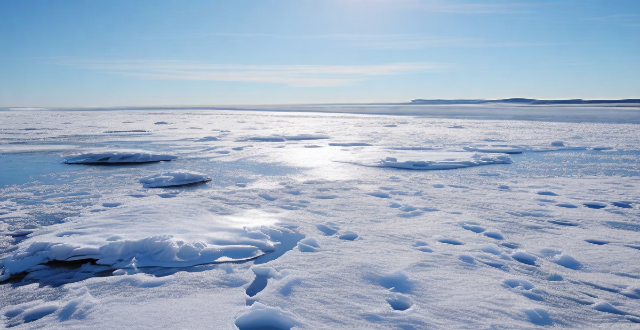The article discusses the long-term consequences of climate loss and damage, including rising sea levels, extreme weather events, loss of biodiversity, impact on agriculture, disruption of industries, costs of mitigation and adaptation, health risks, displacement and migration, and impact on culture and heritage. It highlights the need for a global effort to reduce greenhouse gas emissions and adapt to the changing climate in order to create a more sustainable future.

The Long-Term Consequences of Climate Loss and Damage
Climate change is a global phenomenon that has been affecting the planet for decades. The long-term consequences of climate loss and damage are far-reaching and can have significant impacts on various aspects of life, including the environment, economy, and society. In this article, we will explore some of the potential long-term consequences of climate change.
Environmental Consequences
Rising Sea Levels
One of the most significant environmental consequences of climate change is rising sea levels. As global temperatures continue to rise, glaciers and ice sheets melt, causing sea levels to rise. This can lead to coastal flooding, erosion, and saltwater intrusion into freshwater sources.
Extreme Weather Events
Climate change can also cause an increase in extreme weather events such as hurricanes, tornadoes, floods, and droughts. These events can have devastating effects on communities, causing damage to infrastructure, homes, and businesses.
Loss of Biodiversity
Another environmental consequence of climate change is the loss of biodiversity. As temperatures rise and habitats change, many species may not be able to adapt quickly enough to survive. This can lead to the extinction of certain species and a decrease in overall biodiversity.
Economic Consequences
Impact on Agriculture
Climate change can have a significant impact on agriculture, which is essential for food production. Changes in temperature and precipitation patterns can affect crop yields, leading to food shortages and higher prices.
Disruption of Industries
Climate change can also disrupt various industries, such as tourism, fishing, and forestry. For example, rising sea levels can threaten coastal resorts, while changes in ocean temperatures can affect fish populations and fishing industries.
Costs of Mitigation and Adaptation
The costs of mitigating and adapting to climate change can be significant. Governments and businesses may need to invest in new technologies and infrastructure to reduce greenhouse gas emissions and prepare for the impacts of climate change.
Social Consequences
Health Risks
Climate change can have various health risks, such as heat stress, respiratory problems due to air pollution, and the spread of diseases carried by insects and animals. These health risks can disproportionately affect vulnerable populations, such as children, the elderly, and those with pre-existing medical conditions.
Displacement and Migration
As sea levels rise and extreme weather events become more frequent, people living in affected areas may be forced to relocate or migrate to safer regions. This can lead to social tensions and conflicts over resources and land.
Impact on Culture and Heritage
Climate change can also have an impact on culture and heritage sites. Rising sea levels and extreme weather events can damage or destroy historical landmarks and cultural landscapes.
In conclusion, the long-term consequences of climate loss and damage are complex and multifaceted. Addressing these challenges requires a global effort to reduce greenhouse gas emissions and adapt to the changing climate. By taking action now, we can help mitigate the worst impacts of climate change and create a more sustainable future for all.